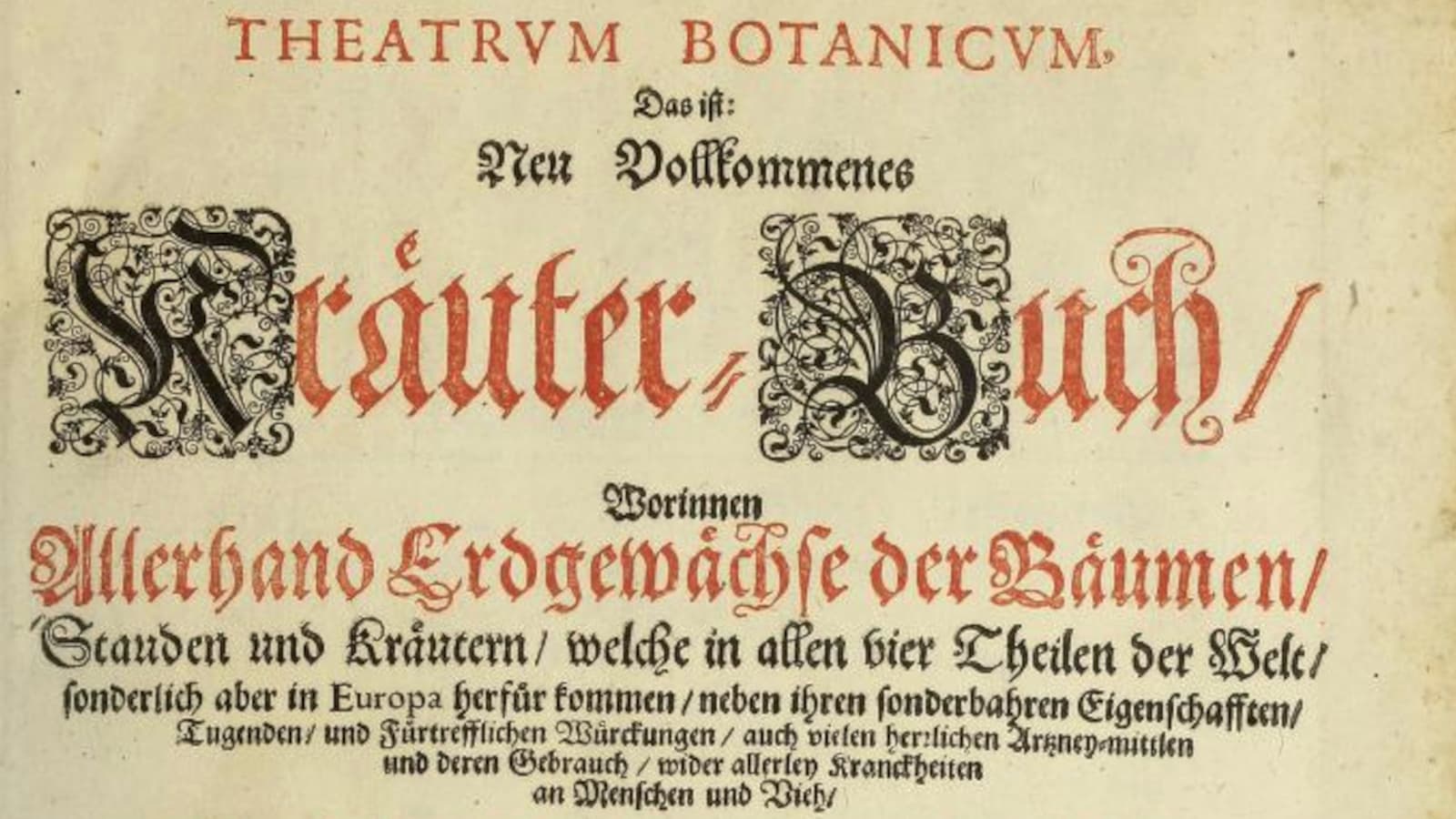 In the course of our research we came across the book “Theatrum Botanicum” from 1690. In this book there is an article about sugar cane, which we consider to be very worth reading.
In the course of our research we came across the book “Theatrum Botanicum” from 1690. In this book there is an article about sugar cane, which we consider to be very worth reading.
Theodor Zwinger’s translation of Pietro Andrea Mattioli’s book “Theatrvm Botanicvm, Das ist: Neu Vollkommenes Kräuter-Buch” (New Perfect Herb Book) with the subtitle “In which are found all sorts of terrestrial plants, trees, perennials and herbs, which grow in all four parts of the world, but especially in Europe, in addition to their peculiar properties, virtues and excellent properties, as well as many wonderful remedies and their use against all sorts of illnesses in people and their use against all kinds of illnesses in humans and cattle with special diligence in a completely new way the like of which has not been seen or found in any herbal book before also adorned with beautiful partly new figures and presented with useful marginalia next to the standard as well as herbal and illness registers“.
Numerous additions were made in the translation, including the contribution on sugar cane. It gives us information about sugar cane, how it is grown and harvested and how it is processed. We also learn about the properties of sugar and how it is used.
Unfortunately, the translation into English is too complicated for us, which is why we can only refer you to the German text.
Sources:
- Mattioli, Pietro Andrea: Theatrvm Botanicvm, Das ist: Neu Vollkommenes Kräuter-Buch (Übers. Theodor Zwinger). Basel, 1690. Seite 310ff. Veröffentlicht im Deutschen Textarchiv. Daraus die folgenden Seiten:
http://www.deutschestextarchiv.de/book/view/zwinger_theatrum_1690/?hl=Rum&p=326,
http://www.deutschestextarchiv.de/book/view/zwinger_theatrum_1690/?hl=Rum&p=327,
http://www.deutschestextarchiv.de/book/view/zwinger_theatrum_1690/?hl=Rum&p=328,
http://www.deutschestextarchiv.de/book/view/zwinger_theatrum_1690/?hl=Rum&p=329.
- https://archive.org/details/theatrumbotanicu00zwin: Theodor Zwinger: Theatrum botanicum, das ist: Neu vollkommenes Kräuter-Buch. Basel, 1696.
explicit capitulum
*



This is the fourth part of our series of posts dealing with rum, rhum agricole and cachaça:
Part 1: Chronology of Rum, Rhum Agricoles and Cachaça
Part 2: Cachaça
Part 3: Rhum Agricole
Part 4: Theatrum Botanicum – Sugar cane.
Part 5: Sugar cane processing in Antigua in 1823
Teil 6: Rum
Theodor Zwinger’s translation of Pietro Andrea Mattioli’s book “Theatrvm Botanicvm, Das ist: Neu Vollkommenes Kräuter-Buch” (New Perfect Herb Book) with the subtitle “In which are found all sorts of terrestrial plants, trees, perennials and herbs, which grow in all four parts of the world, but especially in Europe, in addition to their peculiar properties, virtues and excellent properties, as well as many wonderful remedies and their use against all sorts of illnesses in people and their use against all kinds of illnesses in humans and cattle with special diligence in a completely new way the like of which has not been seen or found in any herbal book before also adorned with beautiful partly new figures and presented with useful marginalia next to the standard as well as herbal and illness registers“.
Numerous additions were made in the translation, including the contribution on sugar cane. It gives us information about sugar cane, how it is grown and harvested and how it is processed. We also learn about the properties of sugar and how it is used.
Unfortunately, the translation into English is too complicated for us, which is why we can only refer you to the German text.
Sources:
http://www.deutschestextarchiv.de/book/view/zwinger_theatrum_1690/?hl=Rum&p=326,
http://www.deutschestextarchiv.de/book/view/zwinger_theatrum_1690/?hl=Rum&p=327,
http://www.deutschestextarchiv.de/book/view/zwinger_theatrum_1690/?hl=Rum&p=328,
http://www.deutschestextarchiv.de/book/view/zwinger_theatrum_1690/?hl=Rum&p=329.
explicit capitulum
*